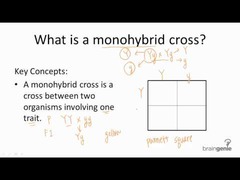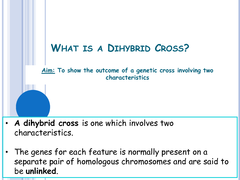American Pageant 14e: Chapter 33 The Great Depression and the New Deal Flashcards
Chapter 33
| 695263344 | Franklin Delano Roosevelt (FDR) | Democratic candidate who won the 1932 election by a landslide. He refused to uphold any of Hoover's policies with the intent on enacting his own. He pledged a present a "New Deal" (its specific meaning ambiguous at the time to the American people) to the American public. | |
| 695263345 | Eleanor Roosevelt | FDR's Wife and New Deal supporter. Was a great supporter of civil rights and opposed the Jim Crow laws. She also worked for birth control and better conditions for working women | |
| 695263346 | Hundred Days Congress | Roosevelt's democratic congress who brought out legislation. Congress gave Roosevelt blank check power, passed many progressive goals, supported public reliability on banks during depression. FDR's "I'm here!" statement. | |
| 695263347 | Relief, Recovery, Reform (Three Rs) | Three components of the New Deal. The first "R" was the effort to help the one-third of the population that was hardest hit by the depression, & included social security and unemployment insurance. The second "R" was the effort in numerous programs to restore the economy to normal health, achieved by 1937. Finally, the third "R" let government intervention stabilize the economy by balancing the interests of farmers, business and labor. There was no major anti-trust program. | |
| 695263348 | Glass-Steagall Banking Reform Act (1933) | This act forbade commercial banks from engaging in excessive speculation, added $1 billion in gold to economy and established the Federal Deposit Insurance Corporation (FDIC). | |
| 695263349 | Civilian Conservation Corps (CCC) | 1933. This unemployment relief act hired young men for reforestation programs, firefighting. flood control, spawn drainage, etc; | |
| 695263350 | Father Coughlin | Catholic priest who used his popular radio program to criticize the New Deal; he grew increasingly anti-Roosevelt and anti-Semitic until the Catholic Church pulled him off the air. At one point he had 40 million radio fans. slogan was "Social Justice" | |
| 695263351 | Huey P. ("Kingfish") Long | Louisiana Senator who opposed FDR's New Deal and came up with a "Share the Wealth" plan, which planned to give $5000 to all families (by taking from the rich). His ideas attracted a large national following. He was later assassinated. slogan was "make every man a king" | |
| 695263352 | Francis Townsend | This man was a critic of the new deal. He developed the Townsend Plan as a way for the elderly to gain a monthly pension of $200 that must be spent within 30 days. | |
| 695263353 | Works Progress Administration (1935) | New Deal program that provided relief to the unemployed in fields such as theater, literature, entertainment, and art. One of the largest "alphabet" agencies. | |
| 695263354 | Frances Perkins | U.S. Secretary of Labor from 1933 to 1945, and the first woman ever appointed to the cabinet. She took much flak from her contemporaries. | |
| 695263355 | National Recovery Act (1933) | This act authorized the President of the United States to regulate industry and permit cartels and monopolies in an attempt to stimulate economic recovery, and established a national public works program. | |
| 695263356 | Schechter v. U.S. (1935) | Declared the National Recovery Administration (part of FDR's New Deal) unconstitutional on the basis that the NRA gave the executive branch regulatory powers that belonged exclusively to Congress. | |
| 695263357 | Public Works Administration (1933) | Provided funding for numerous projects that created many jobs while improving the nation's infrastructure. | |
| 695263358 | 21st Amendment (1933) | This repealed prohibition. | |
| 695263359 | Dust Bowl | A horrible natural disaster in which Midwestern dust from millions of acres of dry, arid land (which in-part got that way from the tilling of the area) was blown up into the air and carried as far as Boston. Caused by dry-farming, drought, the cultivation of marginal farmlands on the Great Plains and soil erosion. | |
| 695263360 | Securities and Exchange Commission (1934) | Congressional commission created in 1934 to administer the Securities Act requiring full financial disclosure by companies wishing to sell stock, and to prevent insider trading and other fraudulent practices. | |
| 695263361 | Tennessee Valley Authority (TVA) (1933) | It built a hydroelectric network that supplied cheap power while also developing a flood-control system, recreational facilities, and soil conservation program. First federal business to compete with private enterprises. | |
| 695263362 | Federal Housing Administration (1934) | Agency that stimulated the housing industry by granting loans to home owners. | |
| 695263363 | Social Security Act (1935) | The greatest victory for New Dealers; created pension and insurance for the old-aged, the blind, the physically handicapped, delinquent children, and other dependents by taxing employees and employers | |
| 695263364 | John L. Lewis | United Mine Workers of America leader who organized the coal miners strike | |
| 695263365 | Wagner Act (1935) | Created the powerful National Labor Relations board to mediate disputes between labor and business, gave organized labor the legal authority to bargain collectively, reasserted rights to unionize and bargain through representatives. This act also helped spur the creation and development of the Congress of Industrial Workers. | |
| 695263366 | National Labor Relations Board | An independent agency of the United States government charged with mediating disputes between management and labor unions. | |
| 695263367 | Congress of Industrial Organizations (CIO) | Union organization of unskilled workers; broke away from the American Federation of Labor in 1935 and rejoined it in 1955. | |
| 695263368 | 20th Amendment (1933) | The major effect of this was to severely cut down the "lame duck" period from the presidency. | |
| 695263369 | Court Packing scheme (1937) | Franklin Roosevelt's politically motivated and ill-fated scheme to add a new justice to the Supreme Court for every member over seventy who would not retire. His objective was to overcome the Court's objections to New Deal reforms. | |
| 695263370 | Harry Hopkins | A New York social worker who headed the Federal Emergency Relief Administration and Civil Works Administration. He helped grant over 3 billion dollars to the states wages for work projects, and granted thousands of jobs for jobless Americans. | |
| 695263371 | Harold Ickes | headed the PWA for unemployment relief, sec of interior | |
| 695263372 | George W. Norris | Norris sponsored the Tennessee Valley Authority Act of 1933. In appreciation, the TVA Norris Dam and a new planned city in Tennessee were named after him.[1][2] Norris was also the prime Senate mover behind the Rural Electrification Act that brought electrical service to under-served and unserved rural areas across the United States. | |
| 695263373 | Alfred M. Landon | ran for president in 1936 vs. FDR. Backed by Hoover. he didnt like social security | |
| 695263374 | boondoggling | several work relief programs under the control of the Works Progress Administration (WPA). It is a politically motivated, trivial, wasteful or impractical government project funded with the intent to gain political favor. | |
| 695263375 | parity | the price set for a product that gave it the same real value, in purchasing power, that it had enjoyed during the period from 1909-1914. | |
| 695263376 | New Deal | the historic period (1933-1940) in the U.S. during which President Franklin Roosevelt's economic policies were implemented. It provided moderate social and economic reform to millions of Americans and probably staved off the rise of socialism in the United States. | |
| 695263377 | Brain Trust | small group of reform minded intellectuals who wrote FDR's speeches often and other new deal legislation (often young college professors) | |
| 695263378 | Agricultural Adjustment Act (AAA) (1933) | got off to a shaky start (was seen as wasteful in the mass slaughter of pigs) but made available many millions of dollars to help farmers meet their mortgages. Was criticized across the board. | |
| 695263379 | Federal Housing Authority (FHA) | To speed up the recovery of better homes, Roosevelt established the this in 1934. This stimulated small loans to house holders, both improving their dwellings, and competing for new ones. | |
| 695263380 | Liberty League | They were a group of wealthy consevatives who had organized in 1934 to fight "socialistic" new deal schemes. This group echoed Hoover's thoughts about Roosevelt's New Deal program. P. 792. | |
| 695263381 | Roosevelt coalition | Also known as the New Deal. Established by Roosevelt during the Great Depression, it helped the unemployed and the lost wages due to the panic on wall street. | |
| 695263382 | (Herbert) Hoover | lame-duck Republican president who was blamed for the Great Depression. Ran for reelection in 1932 and lost terribly. | |
| 695263383 | Emergency Banking Relief Act (1933) | gave the President power over the banking system and set up a system by which banks would be reorganized or reopened | |
| 695263384 | Gold Reserve Act (1934) | United States nationalized gold and prohibited private gold ownership except under license. | |
| 695263385 | National Recovery Administration (NRA) | Most complex and far-reaching effort by the New Dealers to combine immediate relief with long range recovery and reform. It prevented extreme competition, labor management disputes, and over-production; federally coordinated consensus of business leaders (Hugh Johnson) to regulate businesses (wages, limits, working conditions) | |
| 695263386 | Mary McLeod Bethune | United States educator who worked to improve race relations and educational opportunities for Black Americans. She was the director of the Office of Minority Affairs in the National Youth Administration, and was also the highest-ranking African American in the Roosevelt administration. | |
| 695263387 | Robert F. Wagner | Senator associated with the National Labor Relations Board Act | |
| 695263388 | Fair Labor Standards Act (1938) | created a minimum wage of 40 cents per hour; set up a maximum of 44 hours per week in a number of industries; banned children under the age of 16 from working in some industries | |
| 695263389 | Keynesianism | the economic theories of John Maynard Keynes who advocated government monetary and fiscal programs intended to stimulate business activity and increase employment | |
| 695280273 | American workers had to be employed to obtain benefits | The most important difference between the American Social Security System and most European social welfare systems was that __________. |














